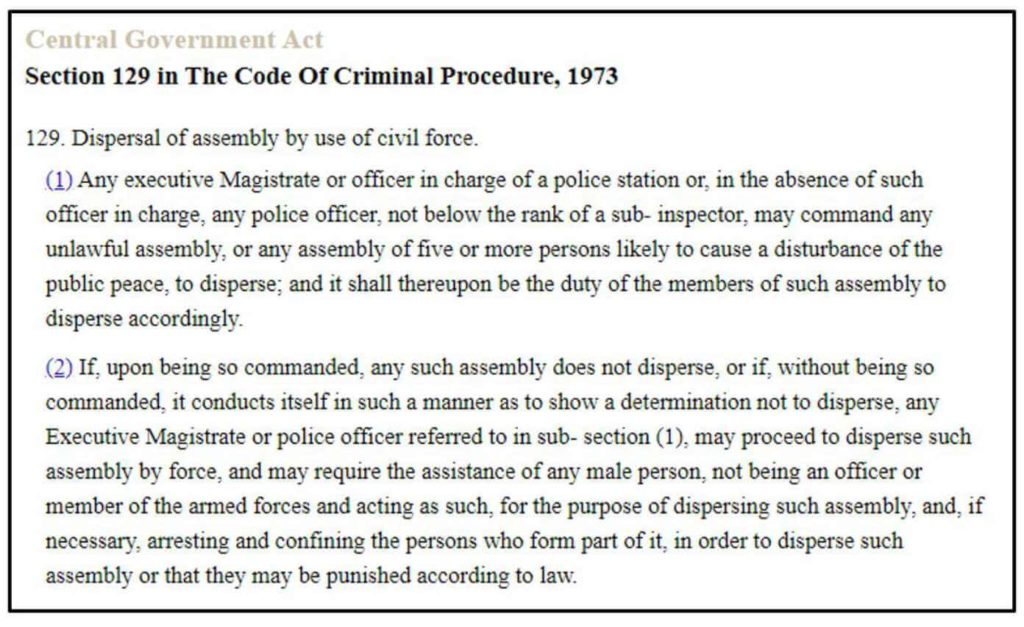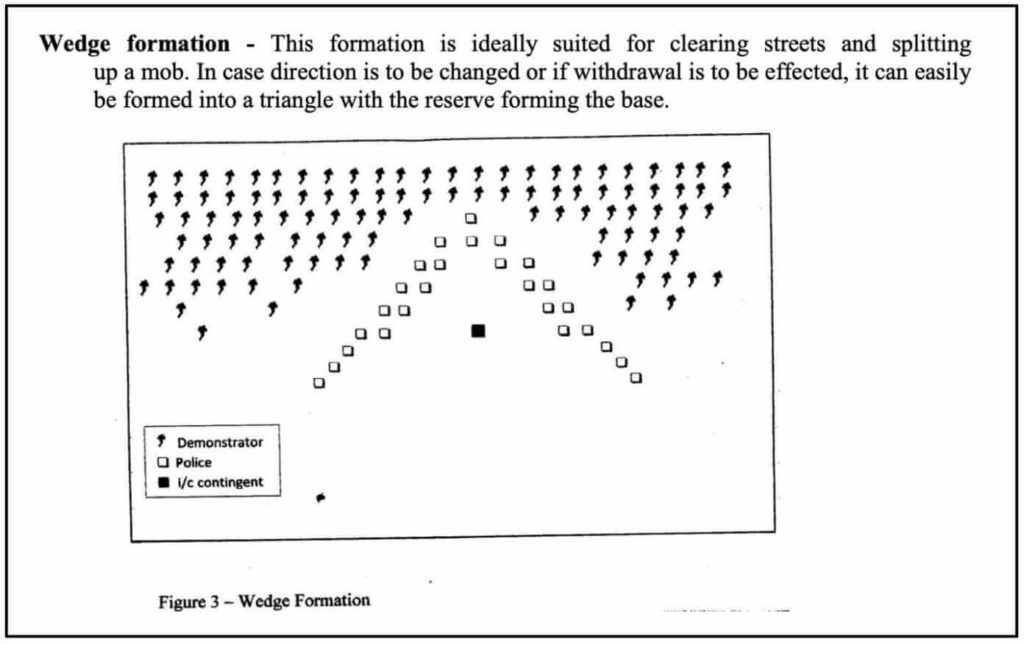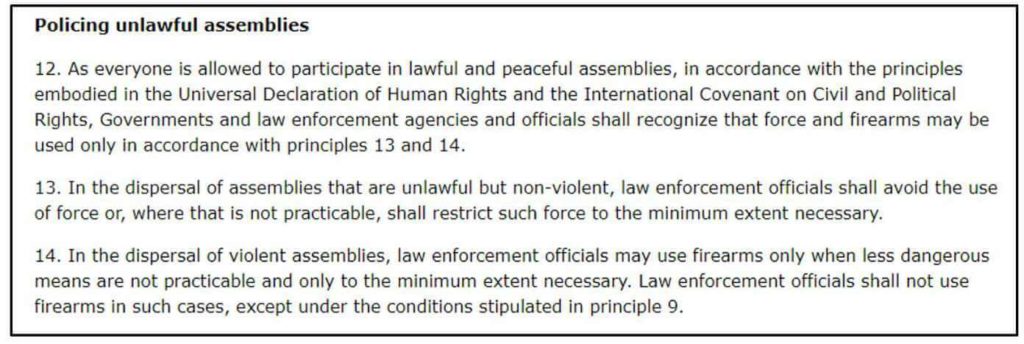Delhi police faced flak for not being able to act in time and control the violent riots leading to loss of life. But how are the Police supposed to control crowds and deal with violent protests? Here is an explainer.
Many protests were witnessed across India after parliament passed the Citizenship Amendment Act in December 2019. Also, the recent riots in Delhi have claimed the lives of many. Video footage of vandalism, arson, and lynching from Delhi was circulated on the internet, clearly depicting disintegrated law and order in the state. The role of Delhi police was also questioned following the clashes between them and students of prominent universities in the national capital, earlier this year.
In the wake of protests & riot-like situation, what are the Police supposed to do and how are they supposed to act? What is the duty of the police to effectively stop these riots?
Article 19 grants citizens the freedom to assemble peacefully without arms
Peaceful protests and non-violent marches played an important role in India’s independence movement. Article 19 of the Indian Constitution grants all Indian citizens the freedom of speech and expression, and the right to assemble peacefully without arms. However, this is subject to ‘reasonable restrictions’. The right is subject to conditions like sovereignty and integrity of the country is not compromised, the state’s relation with neighbouring countries is not at stake, state’s security is not affected, and public order is not disturbed.

The restrictions are mainly found in the Indian Penal Code, the Police Act of 1861, the Maintenance of Public Order Acts of various States, Indian Law Amendment Act of 1908, and the Criminal Procedure Code.
Information regarding public assembly needs to be brought to the attention of police
Before organising a public assembly, prior information related to time, location, and nature of assembly must be given to the police. ‘Police’ and ‘public order’ are State subjects implying that responsibility of maintaining law and order rests with the state government in the case of states and with the Ministry of Home Affairs in the case of Union Territories.
An assembly is deemed ‘unlawful’ if it turns violent or unruly. Once the assembly turns unlawful, the police will interfere and disperse the crowd. If it is beyond their control, or under special circumstances, the Ministry of Home Affairs may deploy Central Armed Police Forces personnel and even military to impose peace. Section 141 of the Indian Penal Code defines ‘unlawful assembly’ as follows. Riots begin from an unlawful assembly.

BPRD published a handbook on Crowd control in 2016
The Bureau of Police Research and Development (BPRD) in 2016 published a handbook on Crowd Control which talks in detail about dealing with violence in public protests and unlawful assembly. BPRD is the government’s research arm for all issues related to policing and is an organization under the Ministry of Home Affairs (MHA). The handbook has detailed information & guidelines on crowd control along with relevant anecdotes and examples.
The handbook suggests that the police should first resort to psychological control methods to disperse the crowd based on its nature. A few psychological methods include persuasive appeals, humorous and witty remarks, confident police attitude, making the crowd wait, and unexpected distractions. However, the usage of such methods should be such that it does not induce panic in the crowd.
Only if psychological tactics fail, police can resort to using force for dispersal
The handbook further suggests that if psychological methods of persuasion, warning and advice don’t work and the use of force is unavoidable, the police should use the minimum possible force so that damage to life and property is least.
Dispersal of unlawful assembly is to be done as per sections 129 to 132 of CrPC
Sections 129 to 131 of chapter X of the Code of Criminal Procedure (CrPC) deal with ‘maintenance of public order and tranquillity’ which is about the dispersal of assembly by use of civil force, armed forces and their powers. Section 132 has details with respect to protection against prosecution for acts done under these sections.
Section 129 authorizes only executive Magistrate, officer-in-charge of a police station or anyone at the rank of sub-inspector or above, to command the dispersal of any unlawful assembly. If the assembly still does not disperse or does not show any intention to do so, then the officer can take the help of public for dispersing the assembly, or for taking action against those who are a part of it.

Based on the circumstances, the police can make of use of force to disperse the crowd. However, the following principles need to be adhered to.
1. No force should be used more than necessary
2. It should not be used as a punitive measure
3. It must cease immediately once the objective has been attained
Prior warning of usage of force needs to be given by police
Before using force, the police have to give warning to the assembly that force will be used to disperse them. If the crowd refuses, then the police can resort to force for dispersal. The intensity and manner of force that will be used depends upon the circumstances. Factors such as the strength of the crowd and their attitude are to be considered.
It is also mandatory that the police first use tear smoke and cane/lathi charge before firing. While the effectiveness of tear smoke depends on the weather conditions and dynamics of wind, use of cane/ lathi charge should be conducted only if sufficient force is available. Police should ensure that at the time of lathi charge, contact with head is avoided.
Lathi charge should be such that injury inflicted is recoverable
There should always be an armed contingent accompanying the police along with the personnel who have lathis and tear smoke. Plastic pellet-firing guns can also be used when lathi-charge doesn’t suffice. Again, care should be taken that only recoverable damage is done to the human body.
Usage of firearms is permitted only in exceptional situations
Only if all the other options have failed, in extreme situations, police can use firearms. Proper warnings have to be given to the crowd. The most threatening part of the crowd is to be targeted and the aim should be kept at legs to avoid severe injuries. Those injured should be given first aid and sent to the hospital immediately. Under Section 131, if the situation goes out of hand, the police can seek the help of armed forces.
Right to private defence is applicable to all law enforcement agencies
All the law enforcement agencies also have the right of private/self-defence under IPC just like the ordinary people for protecting life and property. Further, Section 132 of CrPC protects police and the armed forces from prosecution for using force as mentioned earlier.
Crowd control & management is part of syllabus for police
Crowd control management is part of training syllabus of Constables, Sub Inspector and Deputy Superintendent of Police. For IPS officers, crowd management training is imparted during their basic training course. Standard infantry formations for mob control are also given in the handbook.

Even the UN recommends the usage of minimal force against people in unlawful assembly
The United Nations Basic Principles on the Use of Force and Firearms adopted in 1990 also stresses that the use of force should be avoided as much as possible. Only in unlawful but non-violent assemblies, the minimum force needs to be used. Use of firearms to a minimum extent has to be restricted to violent unlawful assemblies.

A study by ORF in 2017 highlights the lack of capacity in state armed police forces to deal with violent civil protests
A study by Observer Research Foundation in 2017 stated that while formulating a plan of action, the local police must take into consideration five parameters- information on the incident, their intent, method to be used for dispersal, efficient logistics, and effective communication. The report states that state armed police forces do not have enough manpower or proper equipment. It also adds that the training imparted is insufficient. In short, state police do not have adequate capacity to deal with violent civil protests on their own, because of which they tend to approach the centre. The study is predominantly based on Jat protests in Haryana and Kashmir unrest after the death of militant leader Burhan Wani, both in 2016.
In UK, Public Order Act, 1986 governs public assemblies
Protests, riots, affray and unlawful activities are controlled by the Public Order Act of 1986 in the United Kingdom. In United Kingdom, Kettling was a technique used by police to corral crowds and trap them. This tactic was controversial and received a lot of criticism since even bystanders were caught in the 2001 anti-globalisation protests. The issue was raised in the European Court of Human Rights which ruled that the tactic was lawful.
Featured Image: Crowd Control during violent riots


